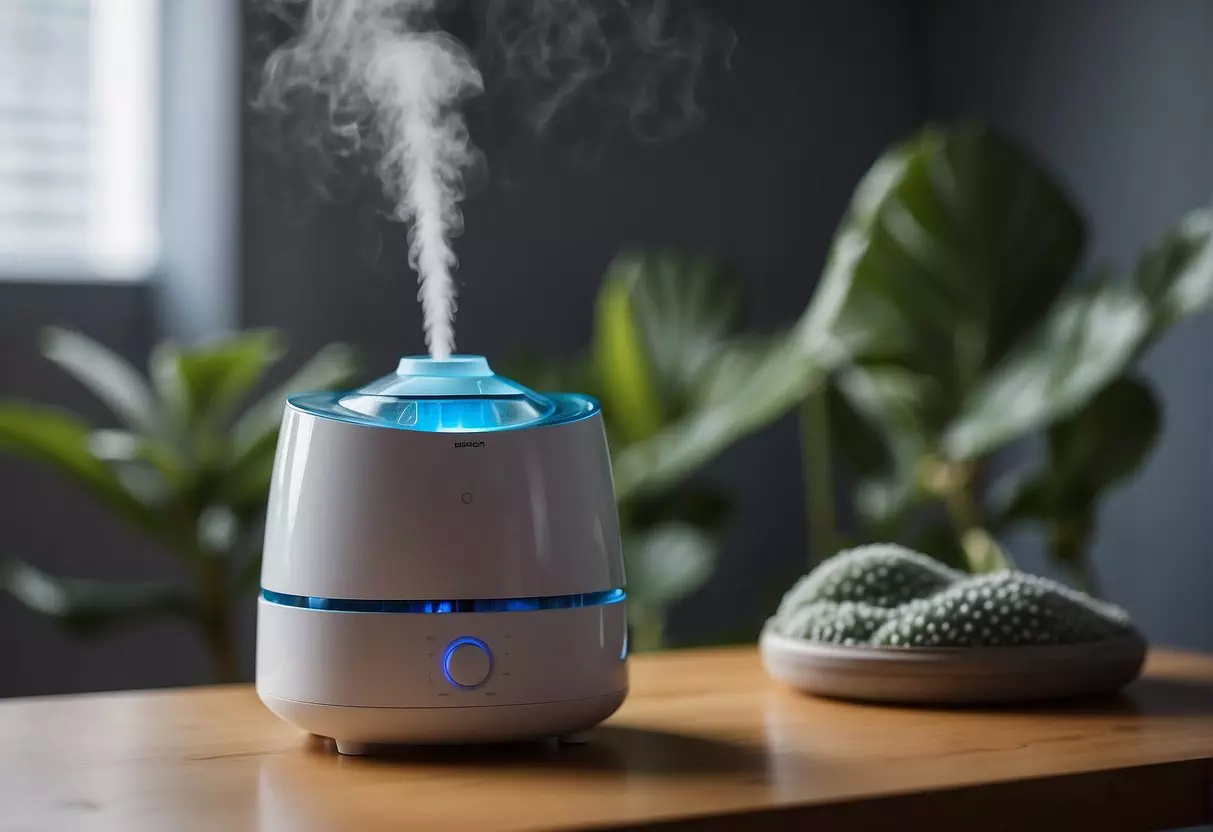What Are the Disadvantages of Humidifier for Baby? Understanding the Risks
When considering the use of a humidifier in your baby’s room, it’s important to weigh not only the benefits but also the potential disadvantages. While humidifiers can help maintain optimal humidity levels, which can be soothing for a baby’s dry skin and nasal passages, they’re not without potential issues. If you’re thinking of using a humidifier to provide comfort for your little one, it’s crucial to understand how it might affect your baby’s health and environment.

One of the key concerns with humidifiers is the maintenance required to keep them clean. Without regular, thorough cleaning, humidifiers can become a breeding ground for bacteria and mold, which can then be aerosolized into the air your baby breathes. Proper cleaning and maintenance are essential to ensure that the moisture the humidifier emits is safe. Additionally, some types of humidifiers, particularly ultrasonic ones, can disperse not just water mist but also any minerals or impurities present in the water, which could pose inhalation risks or contribute to dust in the room.
Another consideration is the type of humidifier you choose. An ultrasonic humidifier’s ability to turn water into a fine mist comes with both benefits and downsides. While they’re often quieter and more energy-efficient, the fine mist they emit can leave a white dust from minerals on surfaces near the humidifier if tap water is used. This is why using distilled water is recommended, but that comes with an added cost. It is important that you get informed and carefully consider what’s best for your baby’s health and comfort when selecting and using a humidifier.
Table of Contents
Potential Health Concerns

When adding a humidifier to your baby’s room, it’s essential to be aware of some health concerns. These can range from accidents associated with the device’s operation to potential impacts on your child’s respiratory health.
Risk of Burns and Injuries
Steam humidifiers, contrary to ultrasonic or cool-mist ones, can pose a risk of burns if your baby comes into direct contact with hot steam or the humidifier’s heated elements. Ensuring safety measures are in place and the device is out of reach can prevent such hazardous situations.
Breathing Difficulties and Lung Issues
Humidifiers have a potential link to aggravating lung disease, asthma, and triggering allergies due to increased humidity fostering the growth of dust mites and mold. Particularly for babies susceptible to upper respiratory infections, a meticulous balance in humidity levels is crucial.
Amplifying Illnesses
During flu and cold seasons, humidifiers might help soothe symptoms; however, improper cleaning and maintenance can turn these devices into breeding grounds for bacteria and viruses, possibly amplifying illnesses. It’s vital to follow manufacturer cleaning instructions and regularly replace filters to mitigate this risk.
Maintenance and Cleaning Challenges
Keeping your baby’s humidifier in top shape requires a bit of work. Ensuring the device is clean and functioning properly is vital to prevent potential problems that may affect your little one’s health and the air quality in their room.
Mold and Bacteria Growth
Mold and bacteria thrive in moist environments, which makes humidifiers a potential breeding ground for these unwelcome guests. If you don’t clean your humidifier regularly, it can become a source of mold growth, releasing harmful spores into the air. Similarly, stagnant water in the tank can lead to bacteria growth, which may then be dispersed into your baby’s room.
Mineral Deposits and White Dust
If you’re using tap water in your humidifier, minerals can accumulate and cause deposits in the tank and on other parts of the humidifier. These mineral deposits can become a mess to clean over time. Additionally, some humidifiers can expel a fine, white dust made up of these minerals, which might settle on surfaces in your baby’s room and can be inhaled.
Regular Cleaning Requirements
A humidifier needs to be cleaned regularly to ensure it’s safe for use in your baby’s room. This usually involves rinsing out the tank, wiping down the interior components, and replacing filters as needed. Depending on the model, you might need to clean it as often as after each use, which means a significant commitment to maintenance on your part.
Choosing The Right Humidifier

When setting up a nursery, finding a humidifier that maintains a healthy humidity level without disturbing your baby is essential.
Selecting the Appropriate Size
Size matters when it comes to choosing a humidifier for your baby’s nursery. A unit that’s too small won’t effectively manage the humidity levels in the room, while one that’s too large can contribute to excessive moisture and mold growth. Aim for a model designed to cover the square footage of the nursery. For a standard-sized crib area, a medium-sized nursery humidifier typically suffices.
Understanding Humidifier Types
There are various humidifiers to consider:
- Cool mist humidifiers, such as ultrasonic or evaporative types, are recommended for baby’s rooms as they don’t contain a heating element, thus reducing burn risks.
- Warm mist humidifiers or vaporizers heat water to create steam, which can feel soothing during cold weather but carry greater risk with babies.
- Ultrasonic humidifiers use high-frequency vibrations to generate a fine mist and are known for their quiet operation.
Each type affects the room’s environment differently, so choosing one that suits your specific needs is vital. For instance, if you’re considering enhancing comfort in a dry climate, an evaporative humidifier may be a beneficial choice.
Considering Noise and Lights
Babies are sensitive to noise and light, so it’s important to look for a humidifier with quiet operation and minimal light emissions. Some ultrasonic humidifiers operate almost silently and have no bright lights, ensuring a peaceful sleep environment. Always check the product specifications for noise levels (measured in decibels) and opt for models specifically labeled as suitable for nurseries or bedrooms.
In choosing a humidifier suitable for a baby’s room, consider the top picks that align with these guidelines to ensure a comfortable and safe environment.
